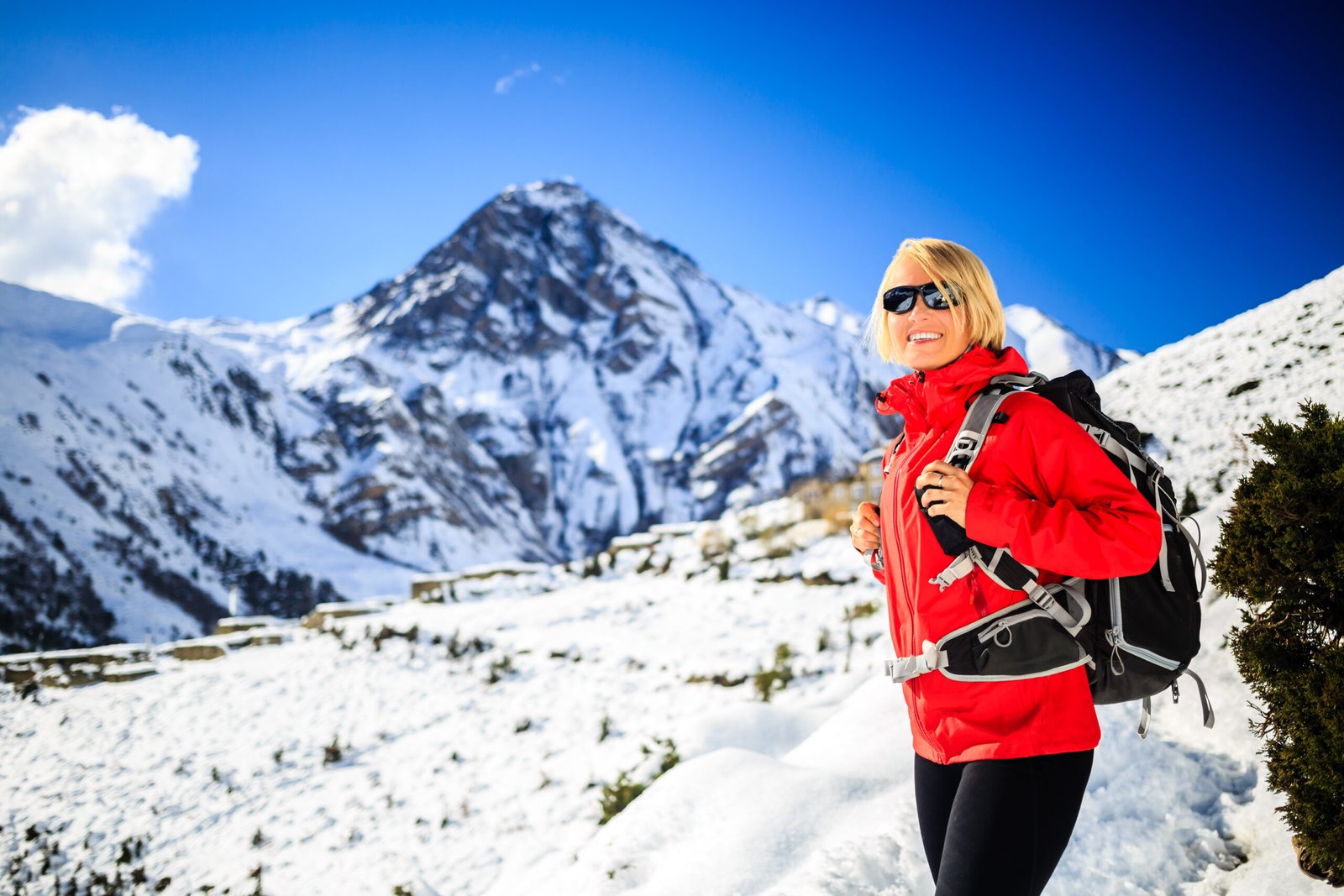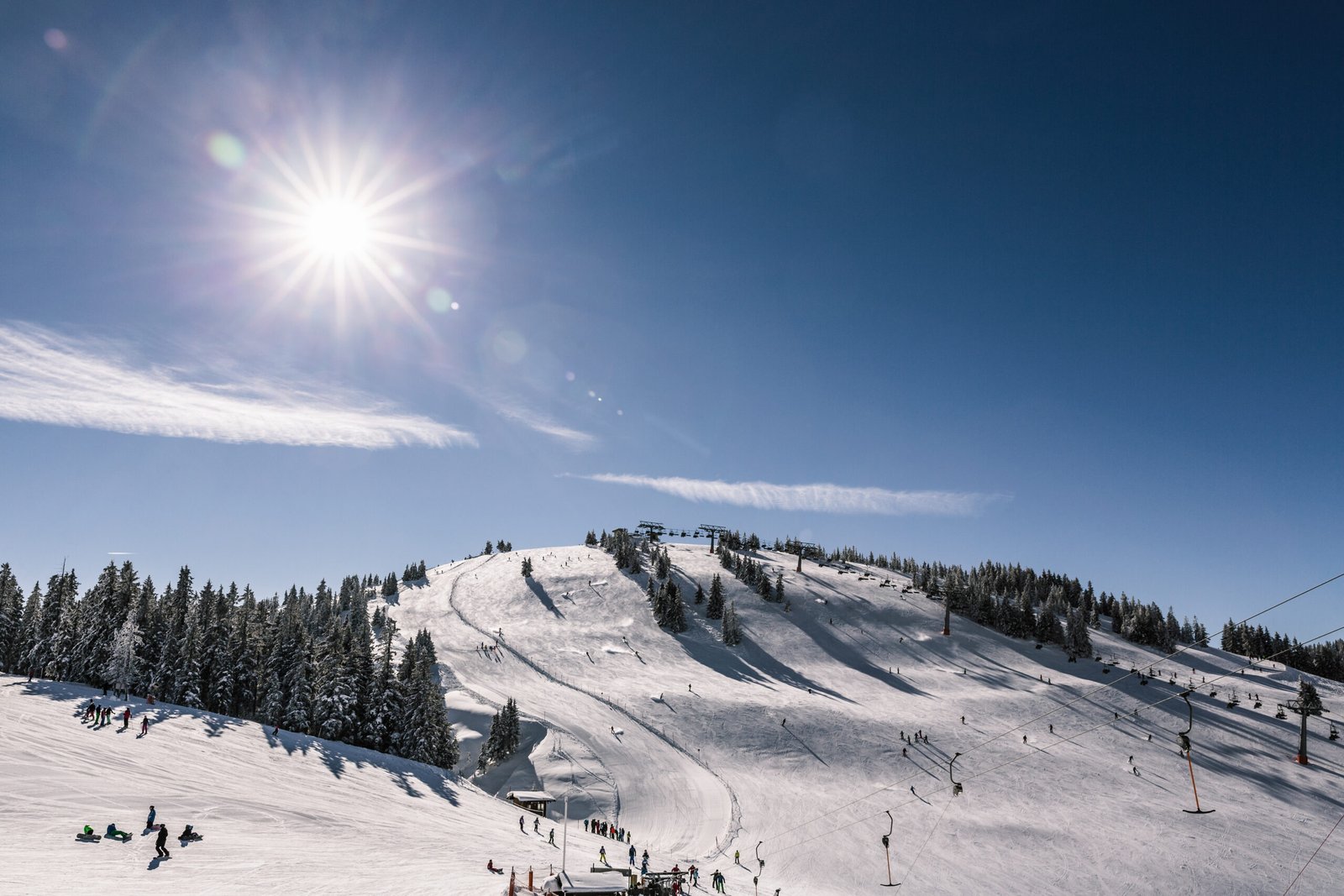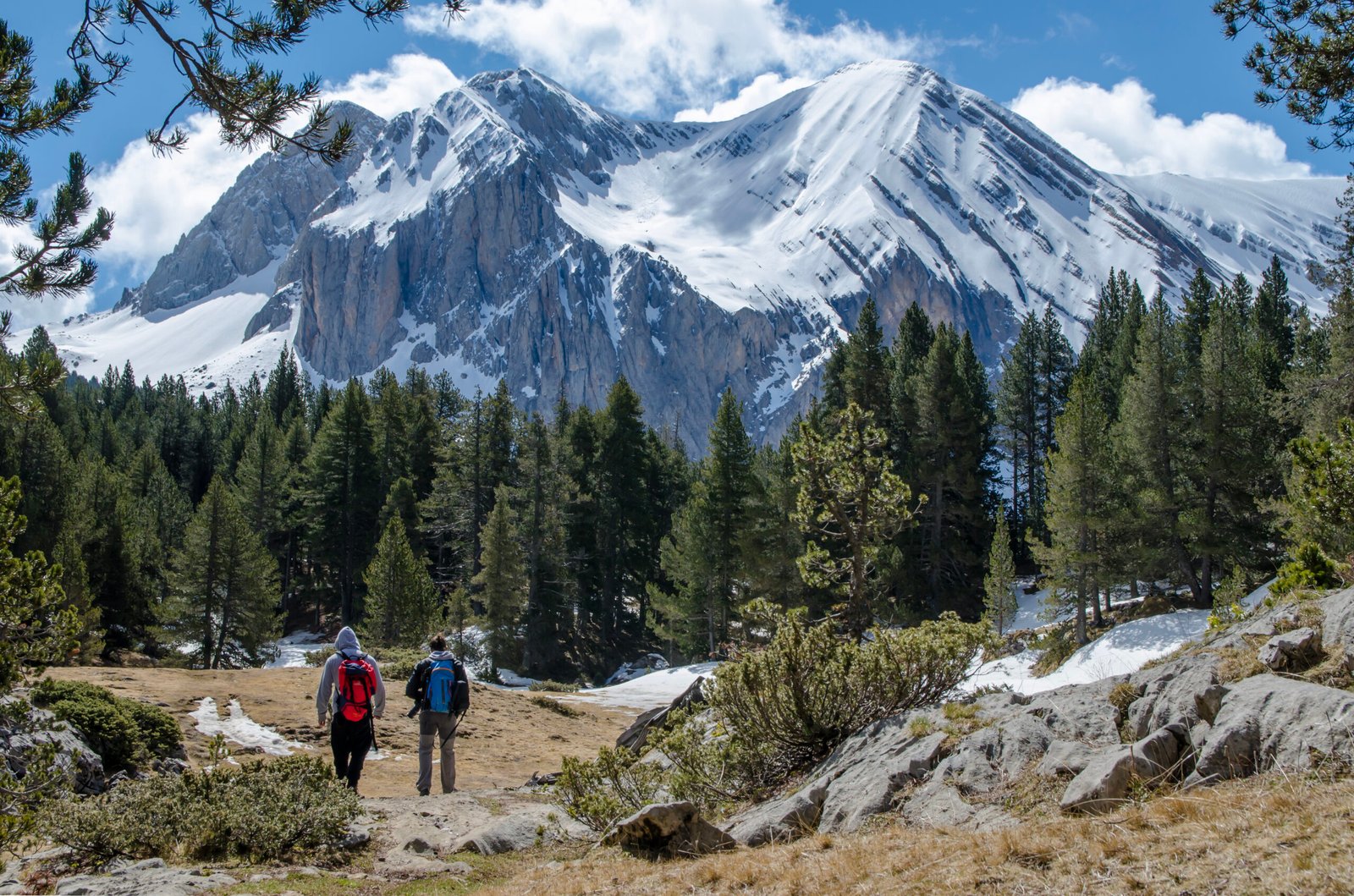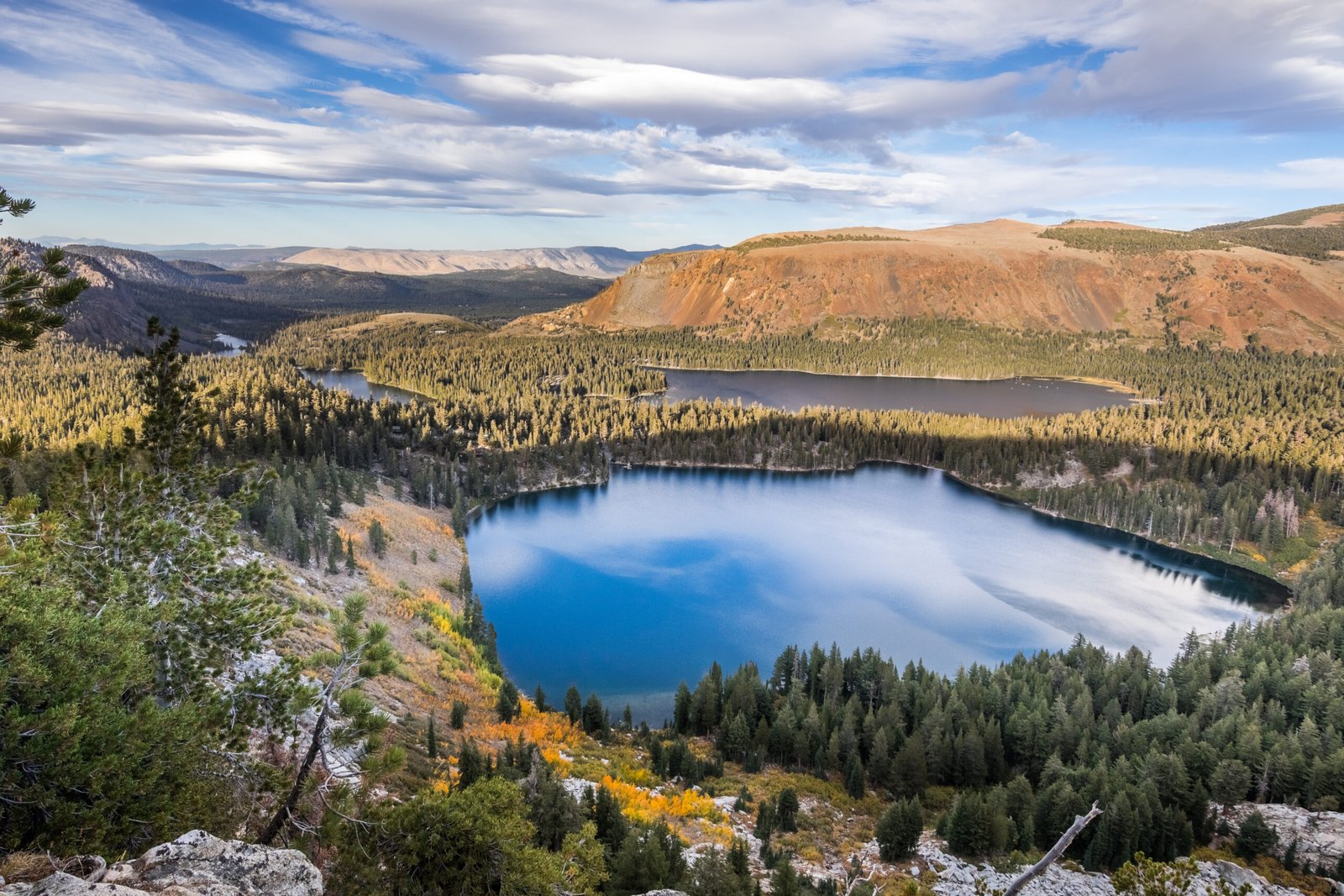Standing at 11,053 feet above sea level, Mammoth Mountain beckoned to me like a siren call…
Packing Perfection: Essential Gear for Every Mammoth Mountain Season
With decades of mountain experience guiding adventurers through Mammoth’s diverse seasons, we’ve learned that successful mountain adventures begin long before you reach the slopes or trails. The difference between an unforgettable experience and a challenging ordeal often lies in what you pack—and more importantly, what you leave behind.
Mammoth Mountain’s dramatic elevation changes and unpredictable weather patterns demand strategic packing that adapts to nature’s whims. From powder-perfect winter mornings to sun-drenched summer peaks, each season presents unique challenges that require specific gear solutions.
WINTER SKI SEASON: Building Your Cold-Weather Arsenal
The foundation of winter mountain success lies in mastering the layering system. Your base layer becomes your second skin—merino wool or synthetic materials that wick moisture while maintaining warmth even when wet. Avoid cotton at all costs; it retains moisture and loses insulation properties when damp.
Essential Winter Gear Checklist:
- Insulated ski jacket and pants with waterproof ratings above 10,000mm
- Thermal base layers (top and bottom) in moisture-wicking materials
- Mid-layer fleece or down jacket for variable conditions
- Ski-specific socks with cushioning in heel and toe areas
- Waterproof gloves with liner gloves for dexterity during equipment adjustments
- Helmet and goggles with anti-fog technology
- Neck gaiter and face protection for windy conditions
Personal insight: After watching countless skiers struggle with fogged goggles, invest in quality anti-fog technology. The mountain doesn’t pause for equipment failures.
Ski Lodge Accommodation Strategy: Pack lighter on bulky items since most lodges provide heated drying rooms. Focus on quality over quantity—one excellent jacket outperforms three mediocre layers.
SUMMER HIKING SEASON: Conquering Alpine Adventures
Summer’s deceptive warmth at base elevation transforms into crisp mountain air as you ascend. Temperature drops approximately 3.5°F per 1,000 feet of elevation gain, making layering crucial even in summer months.
Summer Mountain Essentials:
- Lightweight hiking boots with ankle support for rocky terrain
- Moisture-wicking hiking pants and shorts combination
- UV-protective long-sleeve shirt for high-altitude sun exposure
- Insulated jacket for unexpected weather changes
- Wide-brimmed hat and sunglasses with UV protection
- Hydration system with minimum 3-liter capacity
- Navigation tools including map, compass, and GPS device
- First aid kit tailored for mountain environments
Mountain Biking Additions:
- Protective gear including helmet, knee pads, and gloves
- Multi-tool for trail-side repairs
- Spare tubes and tire repair kit
Through years of guiding summer expeditions, we’ve learned that dehydration strikes faster at altitude. Pack more water than you think you need.
FALL FOLIAGE SEASON: Capturing Nature’s Masterpiece
Fall presents Mammoth’s most photogenic season alongside its most unpredictable weather. Morning frost can give way to afternoon thunderstorms, requiring versatile packing strategies.
Fall Photography and Hiking Gear:
- Weather-resistant camera equipment with protective covers
- Tripod for low-light photography during golden hour
- Insulated layers for early morning shoots
- Waterproof shell jacket for sudden precipitation
- Traction devices for potentially icy trails
- Headlamp with extra batteries for shorter daylight hours
Camping Considerations: Fall camping requires four-season sleeping bags rated 10°F below expected temperatures. Ground insulation becomes critical as earth temperatures drop significantly.
SPRING TRANSITION SEASON: Navigating Change
Spring’s arrival brings dynamic conditions that can shift from winter to summer within hours. This season demands the most versatile packing approach, combining elements from multiple seasons.
Spring Versatility Pack:
- Convertible clothing that adapts to temperature swings
- Waterproof everything for melting snow and spring rains
- Microspikes or light traction devices for icy morning conditions
- Sun protection for intense high-altitude UV reflection off snow
- Gaiters to prevent snow and debris from entering boots
ACCOMMODATION-SPECIFIC PACKING WISDOM
Hotel and Vacation Rental Strategy: Maximize comfort items since space isn’t limited. Pack backup gear and focus on post-activity recovery equipment like compression wear and massage tools.
Camping Optimization: Every ounce matters. Choose multi-purpose items and prioritize shelter, warmth, and safety over convenience. Invest in quality sleeping systems—poor sleep compromises mountain performance and safety.
DURATION-BASED PACKING INTELLIGENCE
Weekend Warriors: Focus on weather-specific essentials. Pack one backup option for each critical gear category. Prioritize items you can’t purchase locally.
Week-Long Adventures: Plan for laundry mid-trip or pack sufficient base layers for daily changes. Include repair kits for extended gear usage.
Extended Stays: Establish gear rotation systems. Pack for the worst conditions you might encounter during your entire stay period.
Day Trip Efficiency: Minimize weight while maximizing safety. Focus on emergency essentials and weather protection.
PROFESSIONAL PACKING STRATEGIES
The 24-Hour Rule: Pack everything 24 hours before departure, then remove 20% of non-essential items. This process eliminates emotional packing decisions and focuses on true necessities.
Gear Testing Protocol: Never bring untested equipment on mountain adventures. Break in boots, test waterproof ratings, and verify equipment functionality before departure.
Weight Distribution: Keep heavy items close to your back and centered vertically. This maintains balance during challenging terrain navigation.
EMERGENCY PREPAREDNESS ESSENTIALS
Regardless of season or activity, certain items remain non-negotiable:
- Emergency shelter (space blanket minimum)
- Fire starting materials in waterproof container
- Emergency food with 48-hour calorie supply
- Water purification method
- Emergency communication device
Our decades of mountain experience have taught us that preparation prevents panic. The mountain rewards those who respect its power through proper preparation.
Ready to conquer Mammoth Mountain with confidence? Your adventure begins with the right gear selection. Explore our recommended gear partnerships for tested equipment that performs when conditions challenge your limits.
Take action today: Create your season-specific packing checklist and test your gear before your next Mammoth Mountain adventure. The mountain awaits those who come prepared.




